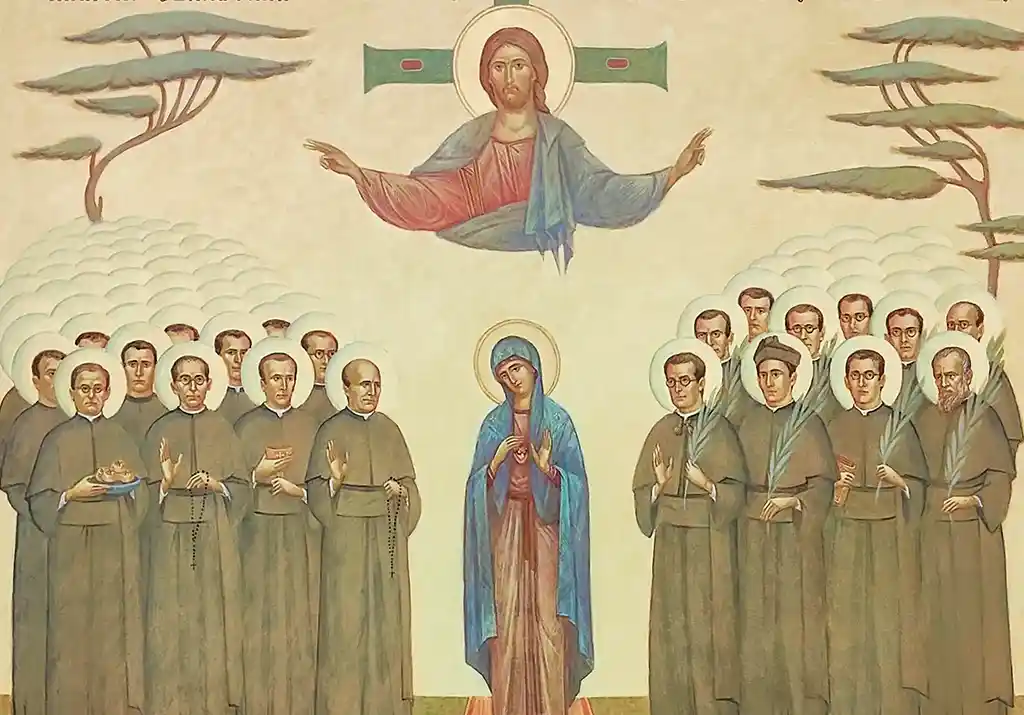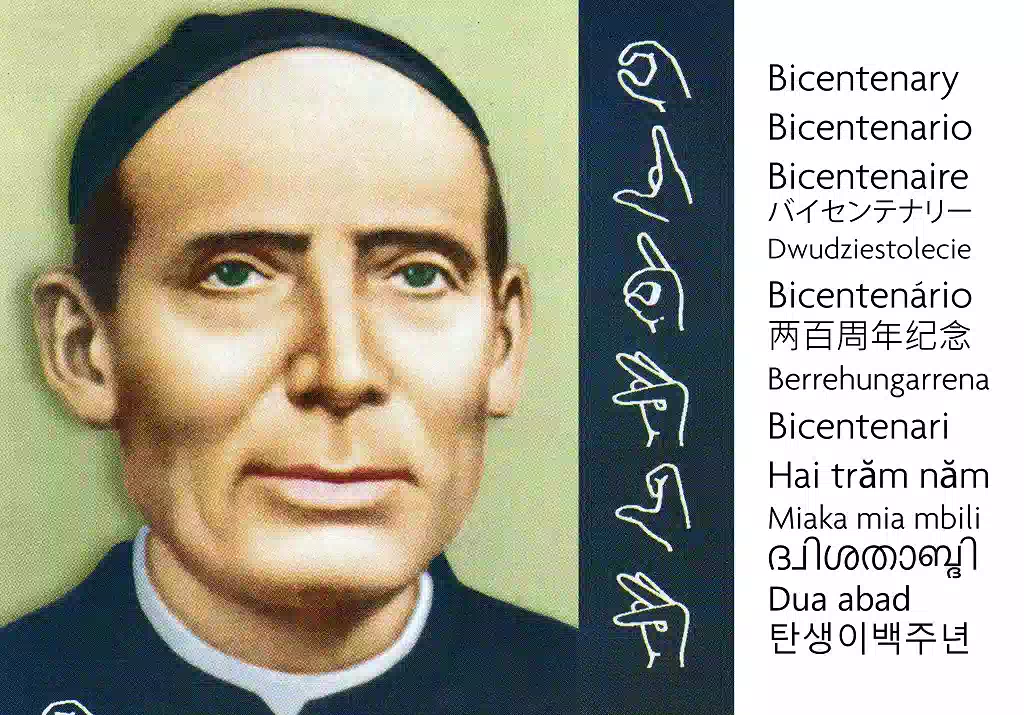In remembering Reverend Fr. Martin Alsina 100 years after his death, it is not a question here of recalling the milestones of his personal history and his tireless work as General of the Congregation, which are already well known. But it could be the moment to recall the last year of the life of one of those men who die with his hand on the plow. And we speak of a year because a month before his death he had just arrived from an amazing journey, long, difficult, and even dangerous; a journey of more than a year in America, beginning in Bahia (Brazil) on December 1, 1920, and ended on January 24, 1922, in the estuary of Vigo (Spain). Felix Alejandro Cepeda, his secretary, to whom we owe a detailed chronicle, which could well pass for a true testament. The main purpose of that trip was to preside over the different Chapters, to prepare the juridical reorganization of the same Organisms that were growing steadily, and to create the first postulancies in the area.

The itinerary had been more or less this: departure from Vigo, Spain (November 12, 1920), Brazil (December 1920-January 1921), Argentina via Montevideo (February-March 1921), Chile (April-May 1921), Bolivia (June 1921), Peru (July 1921), Colombia (via Guayaquil and Colón, Panama, August 1921), United States (via Colón, Panama, September-November 1921), Mexico (December 1921) and Cuba (January 1922). Arrival in Vigo on January 27, 1922.
Anyone who reads the Chronicle of this last trip, written by Fr. Cepeda in Annales 1921-1922, will be able to know the mettle of a man who gave his life for his brothers, as the Constitutions say, until the end. Through it, we witness long and exhausting journeys over land, rivers, and sea, from which we have received astonishing details that give an account of his self-sacrificing dedication. We see Fr. Martin Alsina facing eleven 11-hour train rides from Rio de Janeiro to Sao Paulo; on the way from Pouso Alegre to Sao Paulo, sleeping in a small village because of a landslide; suffering in Santos a strike of dock workers that prevented the departure of steamships to travel by sea to the south; staying overnight on the trip from Curitiba to Porto Alegre due to the derailment of the train they were to take and in which 6 travelers died; traveling by train for 17 long hours from Tucumán to Catamarca because they could not do it by car -it would have been 6 hours- due to heavy rains; crossing the Andes with the international train from Mendoza; undertaking a route to Santiago that would take 23 hours because of a snowstorm, with 5 meters thick on the tracks; ascending in Bolivia at 3700 meters in a train that could not be used by heart patients; crossing Lake Titicaca at 3812 meters altitude by steamer; ascending again by train from Puno to Arequipa at 4500 meters; enduring a rough sea from Mollendo to Callao, to the point of having to embark by means of a chair – tied with strong ropes to the cargo cranes – that finally dropped the passengers to the bottom of the boat that was to take them to the steamer, in the middle of a storm with big waves that completely washed over Fr. General; giving up their desire to reach Trujillo due to a yellow fever epidemic; crossing the Panama Canal to travel for 6 interminable days through the lower Magdalena in a mail steamer on their way to Girardot, where they were saved from falling into a 10-meter cliff due to a failure in the car’s brakes. All this to finally face what would be the most favorable part of the trip: the 6 days from Cartagena to New Orleans on an American steamer, spending 10 hours at the mouths of the Mississippi, a beautiful river, although plagued by crocodiles. And from San Antonio to Mexico, enduring the 42-degree heat in the Yuma region. Once in Mexico, he was able to witness first-hand the persecution that had been going on for the past 10 years. In fact, in Toluca, he had the opportunity to arrange the transfer to one of the Claretian temples of the remains of Brother Mariano González, unjustly shot by the revolutionaries.
If all this were not enough, there was still the return to Spain for the brave General and his secretary. First, they had to return to New Orleans to travel to Havana, in order to avoid a quarantine required for those who sailed from Mexico. And it was on the return from Cuba to Spain that they experienced the greatest danger of the entire journey. Alsina himself in a brief Circular Letter written on February 1 from Madrid:
“Everyone is aware of the furious storm unleashed on the coasts of Spain, Portugal, France and England, and the enormous damage and the many victims it has caused. Well, my dear brothers, this storm also reached us, but before reaching the Azores Islands, and for three days it kept us in a constant threat of plunging us into the abyss, with the great waves that kept falling on the ship in which we were sailing. The danger passed, but this increases in us the duty of gratitude to our great benefactress and mother, and must also increase more and more our filial confidence in her.”
Cepeda related it in darker tones:
“Finally, on January 12, at 10:00 a.m., we occupied our cabins on the steamship “Maasdam” and said goodbye to the coasts of America. On the first days of the navigation, the sea was calm and we were assured that in 10 days the steamer would cover the 3980 miles that separate Havana from Vigo, but on Saturday the 19th a violent hurricane broke out that shook the ocean in an imposing way. The waves rose furiously like mountains and fell on the deck of the steamer with a terrifying noise. The force of the wind prevented the engine from working and so it began to back up “weathering the storm”, in the sailors’ phrase. We feared that it was the end of our lives and that the ocean would serve as our grave. We celebrated mass, tying the altar tightly, to strengthen us for the voyage. Fortunately, after three days, the storm subsided.”

They finally landed in Vigo, Spain, on January 27, 1922, a year and two months after their departure. From there they went to Madrid, from where Father General left immediately on February 3 for La Selva del Camp and Santo Domingo, to preside over two Provincial Chapters. Finally, we found Fr. Marín Alsina in Zafra on February 28, fatigued and with a flu fever that caused him a strong attack of dyspnea. On March 2 he still wanted to get up to celebrate the Eucharist but was prevented from doing so. When the doctor visited him that morning, he was surprised to find that his heart had stopped beating. It was 9 o’clock in the morning. He was 63 years old, 16 of them spent in the service of the Congregation as Superior General. A month before his death he had providentially convoked the General Chapter, two years ahead of schedule. He was unable to preside over the Chapter, but his example of love and heroic dedication to his beloved Congregation was priceless.









